Picture perfect? How Instagram changed the food we eat
- Published
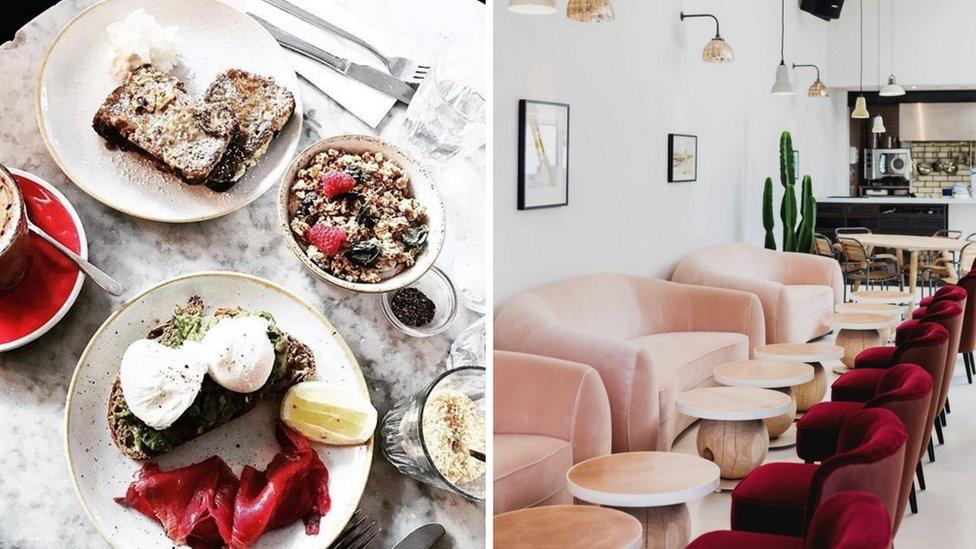
For some diners, a meal out cannot start without first taking a photograph of the meal and sharing it on social media. But can how a restaurant's food appears on a mobile phone screen make a difference to its profits?
A few years ago, choosing a restaurant was simple. A friend would recommend it, or you would read about its good reviews in the paper.
Now the internet is awash with Instagram posts or foodie blogs praising the latest hot restaurant where you live.
People's timelines are filled with sharp, bright images of rainbow bagels, "freak shakes" or technicoloured smoothie bowls.
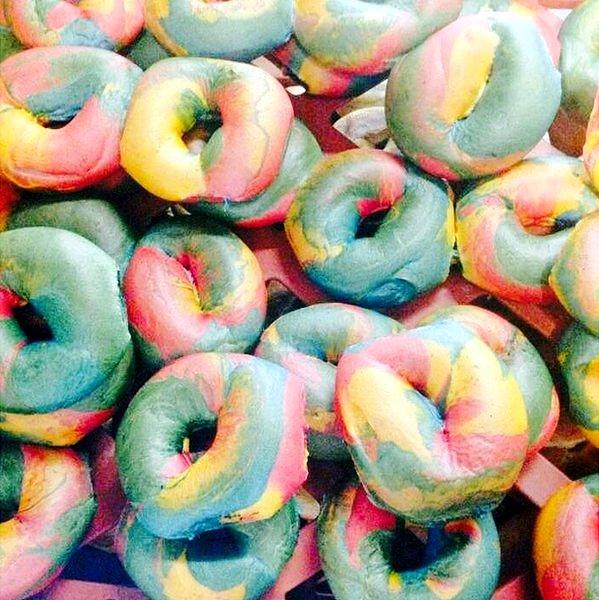
Many business have jumped on the rainbow bandwagon
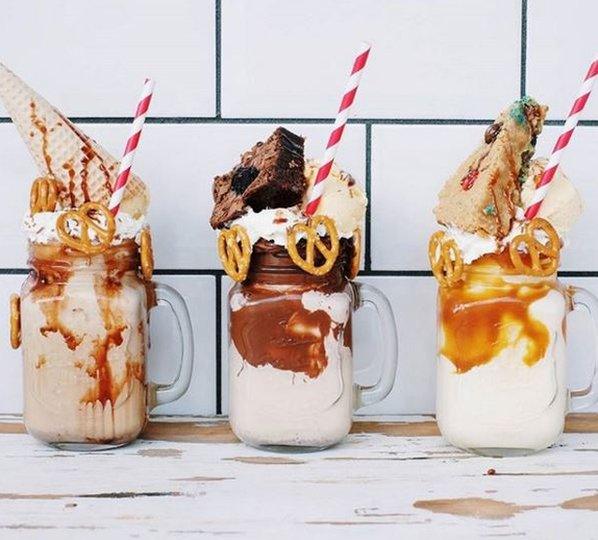
Freakshake: A high-calorie, mega milkshake which combines ice cream, chocolate bars and entire slices of cake
Some chefs and restaurateurs have adjusted their menus to produce meals that look good on a smartphone camera.
Teddy Robinson, a creative director for London café-bar chain Grind, has spent five years making the company as "Instagramable" and savvy as possible.
"The most interesting thing is that people are just more aware than ever of what the food looks like," he said.
"Before Instagram, the only way you'd see what a restaurant's food looked like would be by looking at their own photos, or if they had them printed on menus - I know, the horror - but now it's often how you're introduced to a restaurant.
"It's a refreshing change to see the food put front and centre like this, and it's definitely one of the things that's allowed independents to get a leg up on the chains on Instagram."

Lifestyle blogger Angie Silver says Instagram is changing the way we eat
Menus and interiors have also been redesigned for Instagram.
"Last year we replaced every table in the company with white marble, just because it looks good on Instagram."
Lifestyle blogger Angie Silver, external has noticed the growing trend.
"Nowadays, dishes are created especially for Instagram," she said.
"Bright colours, unusual and unique dishes work well hence the rise of rainbow bagels, freak shakes and unicorn ice-cream."
"A bowl of cereal or slice of toast isn't exciting enough.
"An Instagram friendly breakfast will be smashed avocado, a mouth-watering stack of pancakes or a brightly coloured smoothie bowl."
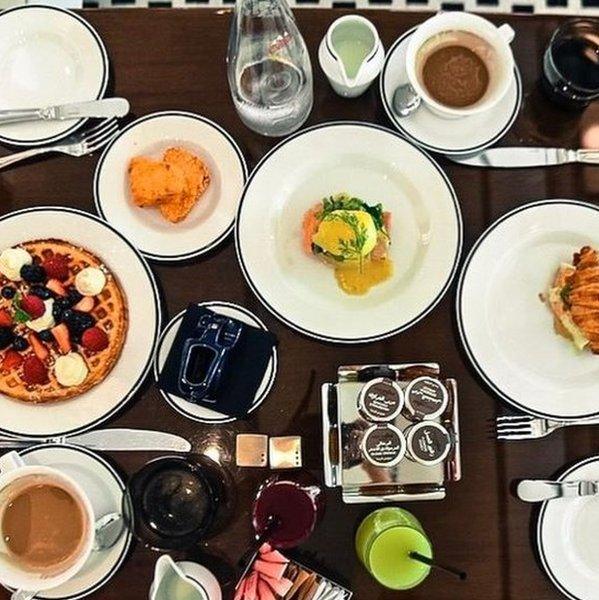
A bowl of cereal would not be considered 'Instagram friendly' by most food bloggers
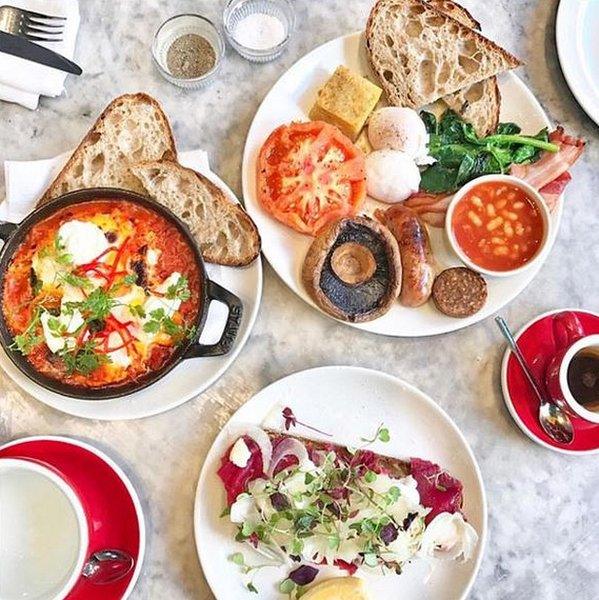
Tables at Grind were replaced with marble tops purely because it looks good on Instagram
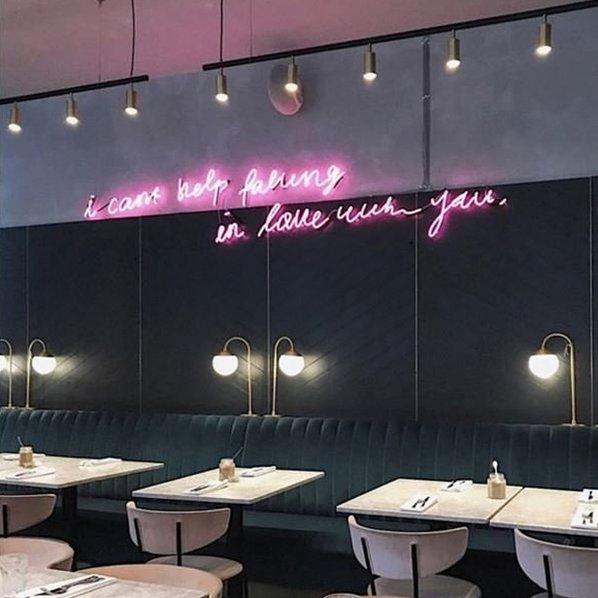
Grind's neon lights are heavily featured on their customer's Instagram accounts
The trend reached a new peak recently when one London business launched a "Selfieccino" - a cappuccino with your face imprinted on it - using a printer that scans the selfie on to the froth of the drink.

One London business launched a "Selfieccino"
"For us, today's dining experience is no longer just about having great food and drink," said Ehab Shouly, director of the Tea Terrace on Oxford Street, where the beverage is served.
"It's all about creating unique experiences that our customers can document on Instagram and social media.
"Millennials today form more than 50% of our customer base and we have to give them what they want. Today's customers want great food, great service and great photos."
Elsewhere in London, the Fox Under The Hill pub in Shooters Hill is offering customers the chance to "upgrade" their Christmas dinner with glitter gravy. The gravy, developed for "Generation Instagram", gives the traditional dinner that extra dazzle, says general manager Ashish Patel.
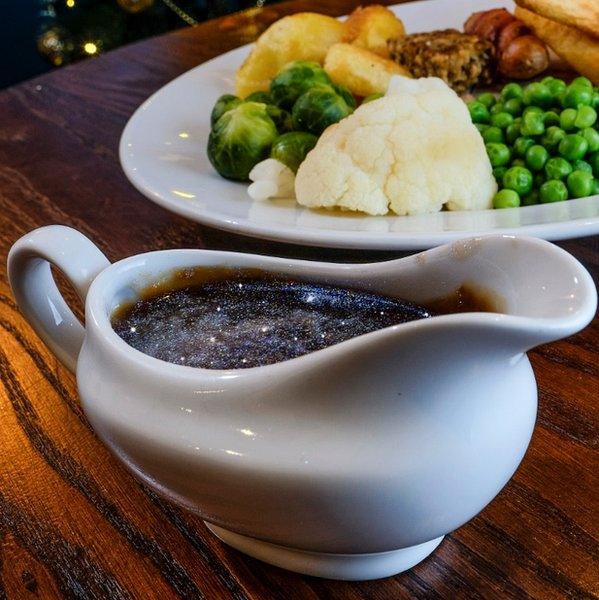
Seasonal sparkle is added to Christmas dinners with glitter gravy
Fine dining is still largely resisting the trend, however.
"There is a growing number of people who will judge food based solely on a photo, which is a little crazy," said James Lowe, head chef and owner of Lyle's in east London.
"It's led to chefs doing what I call 'cooking for pictures' - which is where someone will put a dish together without any concern for whether or not is actually tastes good, just as long as the aesthetic is right.
"The most important thing with any dish is how it tastes. However, one aspect of building a great dish is, undeniably, how it looks - and if something looks good and is photogenic it could be said to be 'grammable'.
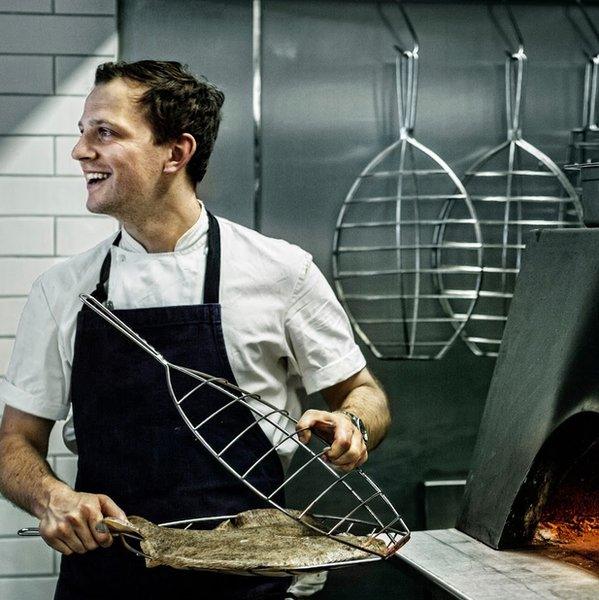
Chef James Lowe said judging food solely on a photo was a "little crazy"
But it's not just wacky cuisine becoming a social media craze. Interior design also plays an important role in seducing the "happy snappers".
The Tower Bridge restaurant Coppa Club said it had phenomenal success with its "dine in an igloo" concept on Instagram, with photo-loving folk quickly filling up bookings for the riverside huts.
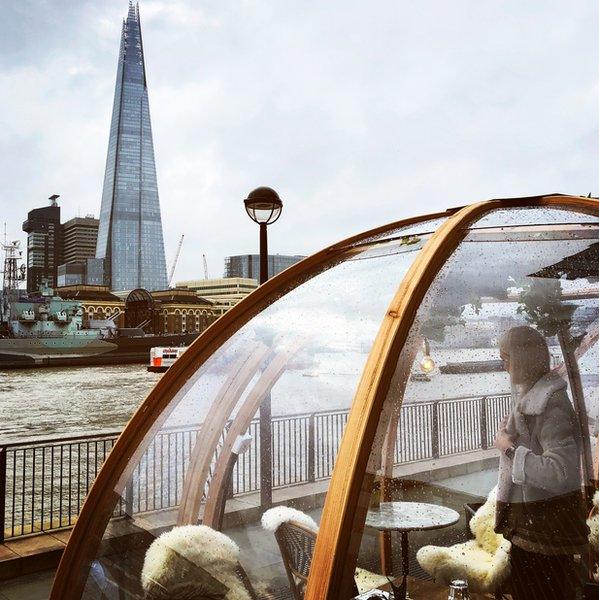
Coppa Club's Thames-side igloos at Tower Bridge were very popular with Instagrammers
"I think with any social media platform it forces businesses to be more original," says Coppa brand manager Lucy Watson.
"Instagram is a much more visual experience than what we've seen previously and it's important to have engaging and consistent content."
But other restaurants are looking to stand out from the crowd by rejecting the insta-food trend entirely.
Darren Yates, runs Japanese deli Auradaz in Leamington Spa, has banned diners from using mobile phones in his restaurant.
"When people come out to eat these days, they put phones or tablets on the table, and it's rude", Mr Yates said,
"If you're coming out to eat it's about conversation and breaking bread, not about social media."
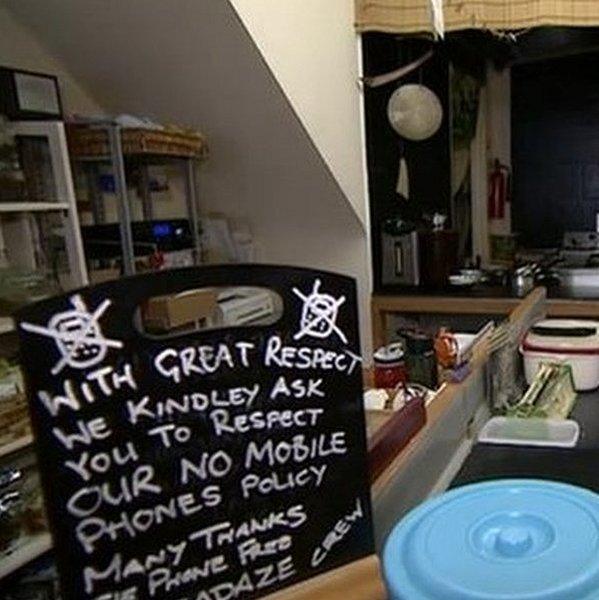
Chef Darren Yates has banned mobile phones in his restaurant